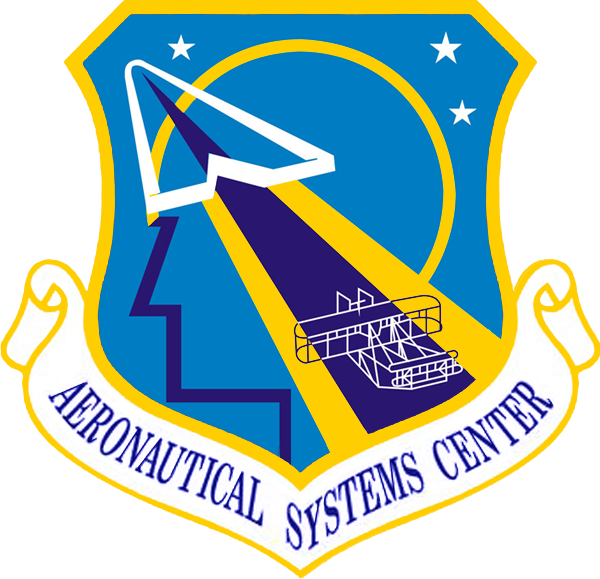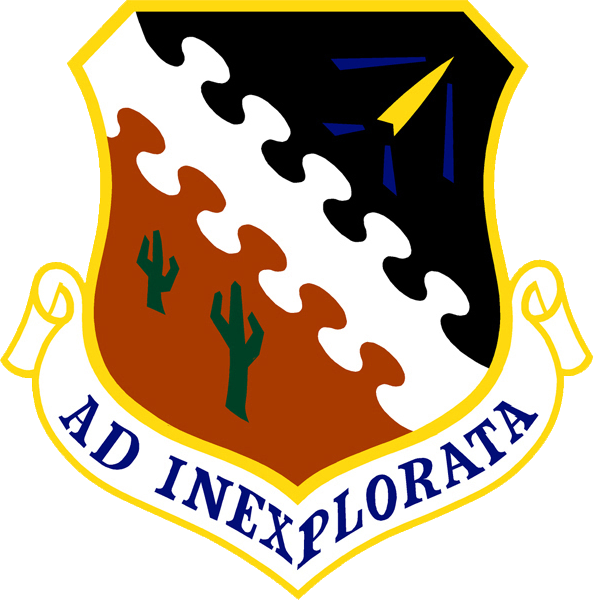|
Program Executive Officer
A program executive officer, or PEO, is one of a few key individuals in the United States military acquisition process. As can be seen from the examples below, a program executive officer may be responsible for a specific program (e.g., the Joint Strike Fighter), or for an entire portfolio of similar programs (e.g., the Navy PEO for aircraft carriers). *''Army'': The direct reports of the Army Acquisition Executive are program executive officers for the respective program executive offices (PEOs) The current program executive officers include (but may not be limited to): Army Each of the Army PEOs direct the Acquisition Executive's lines of effort, such as Ground combat systems. The PEOs work closely with the directors of Cross-functional teams of the Army's Futures command. By May 2023 the programs for intelligence, electronic warfare and sensors (PEO IEW&S) will take all cyber responsibilities, the network elements, both tactical and enterprise (PEO C3T) will take all n ... [...More Info...] [...Related Items...] OR: [Wikipedia] [Google] [Baidu] |
Military Of The United States
The United States Armed Forces are the Military, military forces of the United States. U.S. United States Code, federal law names six armed forces: the United States Army, Army, United States Marine Corps, Marine Corps, United States Navy, Navy, United States Air Force, Air Force, United States Space Force, Space Force, and the United States Coast Guard, Coast Guard. Since 1949, all of the armed forces, except the Coast Guard, have been permanently part of the United States Department of Defense. They form six of the eight uniformed services of the United States. Each of the different military services is assigned a role and domain. The Army conducts land operations. The Navy and Marine Corps conduct maritime operations, the Marine Corps specializing in amphibious and maritime littoral operations primarily for supporting the Navy. The Air Force conducts air operations. The Space Force conducts space operations. The Coast Guard is unique in that it specializes in maritime opera ... [...More Info...] [...Related Items...] OR: [Wikipedia] [Google] [Baidu] |
Program Executive Office, Assembled Chemical Weapons Alternatives
The Program Executive Office, Assembled Chemical Weapons Alternatives (PEO ACWA) was responsible for the safe and environmentally sound destruction of chemical weapons stockpiles previously stored at the Blue Grass Army Depot in Kentucky, and the U.S. Army Pueblo Chemical Depot in Colorado, now known as the U.S. Army Chemical Materials Activity-West. In 1996, the United States Congress established the ACWA program to test and demonstrate alternative technologies to baseline incineration for the destruction of chemical weapons. The ACWA program oversaw the design and construction of the two chemical weapons destruction pilot plants – the Pueblo Chemical Agent-Destruction Pilot Plant (PCAPP) in Colorado and the Blue Grass Chemical Agent-Destruction Pilot Plant (BGCAPP) in Kentucky. As of July 7, 2023, PCAPP and BGCAPP have both concluded destruction of their respective stockpiles of chemical weapons. PEO ACWA will continue to oversee both plants through their closure phases, ... [...More Info...] [...Related Items...] OR: [Wikipedia] [Google] [Baidu] |
516th Aeronautical Systems Wing
The 516th Aeronautical Systems Wing is an inactive wing (air force unit), wing of the United States Air Force. It was last assigned to the Aeronautical Systems Center of Air Force Materiel Command at Wright-Patterson Air Force Base, Ohio. The 516th was responsible for modernization, development, test, production, deployment and sustainment of new and existing aircraft systems to meet Air Mobility Command, Air Force Reserve Command, Air National Guard, and special operations forces in global mobility mission areas. The wing executed a $16.9 billion budget. The wing was first activated at Memphis Municipal Airport, Tennessee in the military reserve force, reserve in June 1949. In 1951, it was mobilization, mobilized for the Korean War. In January 1953, the wing was inactivated and its resources were transferred to the regular 463d Troop Carrier Wing, which was simultaneously activated and assumed its personnel and equipment. The wing was again organized in 1963, when it a ... [...More Info...] [...Related Items...] OR: [Wikipedia] [Google] [Baidu] |
77th Aeronautical Systems Wing
The 77th Aeronautical Systems Wing (77 ASW) is an inactive United States Air Force unit, last assigned to the Aeronautical Systems Center at Wright-Patterson Air Force Base, Ohio. Its World War II predecessor unit, the 77th Reconnaissance Group supported ground units in training by flying reconnaissance, artillery adjustment, fighter, and bomber missions, and in the process trained reconnaissance personnel who later served overseas. History During World War II the 77th Observation Group supported ground units in training by flying reconnaissance, artillery adjustment, fighter, and bomber missions, and in the process trained reconnaissance personnel who later served overseas. The group's 5th Observation Squadron moved to Desert Center Army Air Field in March 1943, where it supported units training at the Desert Training Center, later relocating to Thermal Army Air Field in September.Maurer, ''Combat Squadrons'', pp. 35-36 It converted entirely to "Grasshopper" aircraft in ... [...More Info...] [...Related Items...] OR: [Wikipedia] [Google] [Baidu] |
Aeronautical Systems Center
The Aeronautical Systems Center (ASC) was a U.S. Air Force product center that designed, developed and delivered aviation weapon systems and capabilities. It developed systems for the U.S. Air Force, other U.S. Department of Defense customers, allied, and coalition/partner/client forces. The ASC and its predecessors were located at Wright-Patterson Air Force Base for decades. ASC was established in 1961, and over its lifetime it managed 420 Air Force, joint and international aircraft acquisition programs and related projects; executed an annual budget that reached $19 billion and employed a workforce of more than 11,000 people located at Wright-Patterson AFB and 38 other locations worldwide. ASC's portfolio included capabilities in fighter/attack, long-range strike, reconnaissance, mobility, agile combat support, special operations forces, training, unmanned aircraft systems, human systems integration and installation support. ASC was deactivated during a 20 July 2012 ceremony h ... [...More Info...] [...Related Items...] OR: [Wikipedia] [Google] [Baidu] |
Air Force Test Center
The Air Force Test Center (AFTC) is a development and test organization of the United States Air Force. It conducts research, development, test, and evaluation of aerospace systems from concept to deployment. It has test flown every aircraft in the Army Air Force's and the Air Force's inventory since World War II. The center employs nearly 13,000 people, and controls the second largest base in the Air Force. On 6 July 2012, the previous Air Force Flight Test Center (AFFTC) was redesignated as the Air Force Test Center (AFTC). Up until July 2012, the AFTC consisted of two subordinate wings. The 95th Air Base Wing (95 ABW) provided installation support for all units on Edwards Air Force Base while the 412th Test Wing (412 TW) conducted aircraft testing and evaluation at Edwards. In July 2012, the redesignated 96th Test Wing (96 TW), an amalgamation of the former 96th Air Base Wing, the former 46th Test Wing and the former Air Armament Center at Eglin Air Force Base, Florida, and th ... [...More Info...] [...Related Items...] OR: [Wikipedia] [Google] [Baidu] |
Air Combat Command
The Air Combat Command (ACC) is one of nine List of Major Commands of the United States Air Force, Major Commands (MAJCOMs) in the United States Air Force, reporting to Headquarters, United States Air Force (HAF) at the Pentagon. It is the primary provider of air combat forces for the Air Force, and it is the direct successor to Tactical Air Command. Air Combat Command is headquartered at Langley Air Force Base, Joint Base Langley–Eustis, Virginia, United States. ACC directly operates 1,110 fighter aircraft, fighter, attack aircraft, attack, Reconnaissance aircraft, reconnaissance, combat search and rescue, Airborne early warning and control, airborne command and control and Electronic-warfare aircraft, electronic aircraft along with Command and control, command, control, computing, communications and intelligence (C4I) systems, Air Force ground forces, conducts Information warfare, global information operations, and controls Air Force Intelligence. As of 6 April 2023 ACC oper ... [...More Info...] [...Related Items...] OR: [Wikipedia] [Google] [Baidu] |
AFRL
The Air Force Research Laboratory (AFRL) is a scientific research and development detachment of the United States Air Force Materiel Command dedicated to leading the discovery, development, and integration of direct-energy based aerospace warfighting technologies, planning and executing the Air Force science and technology program, and providing warfighting capabilities to United States air, space, and cyberspace forces. It controls the entire Air Force science and technology research budget which was $2.4 billion in 2006. The Laboratory was formed at Wright-Patterson Air Force Base near Dayton, Ohio, on 31 October 1997 as a consolidation of four Air Force laboratory facilities (Wright, Phillips, Rome, and Armstrong) and the Air Force Office of Scientific Research under a unified command. The Laboratory is composed of eight technical directorates, one wing, and the Office of Scientific Research. Each technical directorate emphasizes a particular area of research within the ... [...More Info...] [...Related Items...] OR: [Wikipedia] [Google] [Baidu] |
Collaborative Combat Aircraft
Collaboration (from Latin ''com-'' "with" + ''laborare'' "to labor", "to work") is the process of two or more people, entities or organizations working together to complete a task or achieve a goal. Collaboration is similar to cooperation. The form of leadership can be social within a decentralized and egalitarian group.Spence, Muneera U. ''"Graphic Design: Collaborative Processes = Understanding Self and Others."'' (lecture) Art 325: Collaborative Processes. Fairbanks Hall, Oregon State University, Corvallis, Oregon. 13 April 2006See also. Teams that work collaboratively often access greater resources, recognition and rewards when facing competition for finite resources. Caroline S. Wagner and Loet Leydesdorff. Globalisation in the network of science in 2005: The diffusion of international collaboration and the formation of a core group.'' Structured methods of collaboration encourage introspection of behavior and communication. Such methods aim to increase the success of teams ... [...More Info...] [...Related Items...] OR: [Wikipedia] [Google] [Baidu] |
Submarine
A submarine (often shortened to sub) is a watercraft capable of independent operation underwater. (It differs from a submersible, which has more limited underwater capability.) The term "submarine" is also sometimes used historically or informally to refer to remotely operated vehicles and Autonomous underwater vehicle, robots, or to medium-sized or smaller vessels (such as the midget submarine and the wet sub). Submarines are referred to as ''boats'' rather than ''ships'' regardless of their size. Although experimental submarines had been built earlier, submarine design took off during the 19th century, and submarines were adopted by several navies. They were first used widely during World War I (1914–1918), and are now used in many navy, navies, large and small. Their military uses include: attacking enemy surface ships (merchant and military) or other submarines; aircraft carrier protection; Blockade runner, blockade running; Ballistic missile submarine, nuclear deterrenc ... [...More Info...] [...Related Items...] OR: [Wikipedia] [Google] [Baidu] |
Naval Mine
A naval mine is a self-contained explosive weapon placed in water to damage or destroy surface ships or submarines. Similar to anti-personnel mine, anti-personnel and other land mines, and unlike purpose launched naval depth charges, they are deposited and left to wait until, depending on their fuzing, they are triggered by the approach of or contact with any vessel. Naval mines can be used offensively, to hamper enemy shipping movements or lock vessels into a harbour; or defensively, to create "safe" zones protecting friendly sea lanes, harbours, and naval assets. Mines allow the minelaying force commander to concentrate warships or defensive assets in mine-free areas giving the adversary three choices: undertake a resource-intensive and time-consuming minesweeping effort, accept the casualties of challenging the minefield, or use the unmined waters where the greatest concentration of enemy firepower will be encountered. Although international law requires signatory nations ... [...More Info...] [...Related Items...] OR: [Wikipedia] [Google] [Baidu] |
Littoral Combat Ship
A littoral combat ship (LCS) is either of two classes of relatively small surface vessels designed for littoral warfare in near-shore operations by the United States Navy. It was "envisioned to be a networked, agile, stealthy surface combatant capable of defeating anti-access and asymmetric threats in the littorals", although their ability to perform these missions in practice has been called into question. Littoral combat ships are comparable to corvettes found in other navies. The and the are the two LCS variants. Each is slightly smaller than the U.S. Navy's earlier but larger than ''Cyclone''-class patrol ships. Each has the capabilities of a small assault transport, including a flight deck and hangar for housing two SH-60 or MH-60 Seahawk helicopters, a stern ramp for operating small boats, and the cargo volume and payload to deliver a small assault force with fighting vehicles to a roll-on/roll-off port facility. Standard armaments include Mk 110 57 mm ... [...More Info...] [...Related Items...] OR: [Wikipedia] [Google] [Baidu] |








